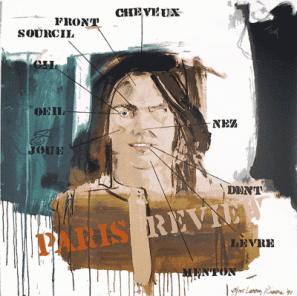 Parts of the Face: French Vocabulary Lesson
Parts of the Face: French Vocabulary Lesson The problem is that the film is child pornography. Well, no. Actually, the problem is that New York University seems unable to recognize that it’s child pornography, because it was made by a famous man using his two daughters as subjects. The problem is that New York University is denying the daughters’ request that the film be destroyed. NYU has agreed to restrict access to the film for the lifetime of the women, but that’s it… because, after all, this is the work of a great man.
Wait a minute… Isn’t it illegal to buy child pornography? To own it? This is a film where the father’s voice is heard telling his reluctant daughters to take off their clothes. The camera zooms in on the breasts or the genitalia, while the father asks prurient questions about their boyfriends and comments on the changes in their bodies. The filming began when one of the girls was 11 and covered a period of five years or more. The girls, visibly self-conscious, are naked or topless. One of them barely speaks. What part of “child pornography” doesn’t NYU understand?
But there’s another way to look at this. Who owns the work?
I’m going to make a radical proposition here: I’m going to propose that childhood be recognized as a sovereign state, and that children be treated as the indigenous populations of a world colonized by adults.
Most folks don’t want to think of children that way, because most of us don’t want to consider how many children are living as captives, how socializing the child is really about colonizing her. And it’s easy for us not to think about them this way, because they do not have a voice, a movement, a lobby, a dime—and they never will. Children do not have a language specific to their experience with which to frame a paradigm of their sovereignty. And that lack of language is one of the most priceless aspects of their culture. It is a culture of astounding plasticity, adaptability. It is a culture of magic, of naiveté, of gullibility, of heartbreaking innocence and spontaneity.
“Cultural restitution” is a term that refers to returning stolen works of art and artifacts and bones of indigenous cultures. When the Nazis raided the museums of Europe to enhance their own prestige, they were operating according to the laws of their own corrupt regime. These seizures are not recognized as legitimate by a world restored to sanity, and, after a slow start, the stolen works of art are being identified and returned. It is immaterial that they may have been sold to third and fourth parties unaware of their original status as Nazi contraband. The rights of the victims have been affirmed.
“Cultural restitution” also refers to art and artifacts taken from indigenous cultures to be housed in museums or historical collections. Skeletons and burial artifacts are being returned to the tribes from whom they were taken by archeologists. There is an acknowledgement that a sovereign people have a right to their history and their culture, and that it is a violation of the sovereignty for another people, even a conquering one, to appropriate the artifacts of that history or culture.
This obscene film by Larry Rivers is an artifact of the corpse of his daughters’ raided and stolen childhood. It was never his to bequeath, and it had no place in the archive passed on to the Larry Rivers Foundation, and New York University has no right to purchase it. It belongs to the daughters. It is the documentation of their violation. It is the reliquary of their lost innocence.
Children have a right to their lives, to their experience. And when a colonizing, predatory adult invades this world, exploiting their vulnerability and raiding their innocence in the name of “art,” children should have the right of an indigenous people to claim the artifact that bears witness to their invasion and colonization.
Was it collaborative? Was this a joint cultural effort between the sovereign state of childhood and the empire of adulthood? This is what one of the daughters, Emma Tamburlini, has to say about her experience: She tells us that it caused her to become anorexic at sixteen, that she has spent years in therapy trying to deal with her father’s behavior. She says that, if she objected to taking off her clothes and being filmed, her father would say she was “uptight,” a “bad daughter.” When she tried to confront him as a teenager, he told her that her intellectual development had been arrested. Seems he was a verbal abuser, as well…
Ms. Tamburlini sums up: “It wrecked a lot of my life, actually.” That sounds about right, actually.
The other sister, the one who is so quiet in the film, declined to comment.
It’s very clear that the daughters’ participation was not voluntary. This was not a situation between equals. It was between a child and an adult—a dependent and her caregiver. Children in a situation like Rivers’ daughters have no more power to resist than the prisoners at Abu Ghraib, who were ordered to strip and participate in sexually humiliating scenarios.
If there is ever a more clear-cut issue of ownership in this world, it is the right of child to the privacy and integrity of her body. What could be more intimately one’s property than one’s organs, one’s skin? What can be more clear than the dependence of a child? There is no ambiguity here. There is no debate about “what is art.” The film is pedophilic and pornographic, a record of incestuous abuse.
This is not a scientific film documenting the developmental stages of mammary glands. This is not an erotic film, celebrating the sensual beauty of adult women. This is a film about humiliation. The subject of the film is the sexual subordination of two girls and their mother to the prurient and pedophilic obsession of a predatory father.
And what about this mother? She participated in the film, certainly enabling the abuse of her daughters. On the other hand, in 1981, she managed to prevent her perpetrator of a husband from showing the film at an exhibition. According to her, “What Larry said was that it would belong to [the girls], as a record that when they got older they could look back at… It wasn’t a huge thing. It’s become huge, because they can’t get back what was given to them.”
Begging to differ, it was a huge thing. Although it's understandable why a daughter in a situation like this might feel safer sharing her feelings with a reporter from a national newspaper.
Here is my fantasy: The daughters will sue. Hundreds of child psychologists and pediatricians, as well as experts in international law will show up for the trial to give testimony. A new precedent will be set. The rights of children will be recognized as those of a sovereign nation, an indigenous people. Damages will be awarded, and, under laws pertaining to cultural restitution, the film will be returned to the two women whose childhood was invaded and violated.
And in my fantasy, Emma Tamburlini will testify, using the same words cited in the Times article. She will say: “I don’t want the film out there in the world.” And then she will repeat a statement she made, a statement straight from the heart of her childhood nightmare, spoken in the elusive and elliptical language of children. And maybe there will be an official interpreter who can translate it into the pedestrian regionalism of adulthood, in words that even a librarian at NYU can understand.
The daughter’s statement is this: “It just makes it worse.”
And, of course, every child understands.

 RSS Feed
RSS Feed
